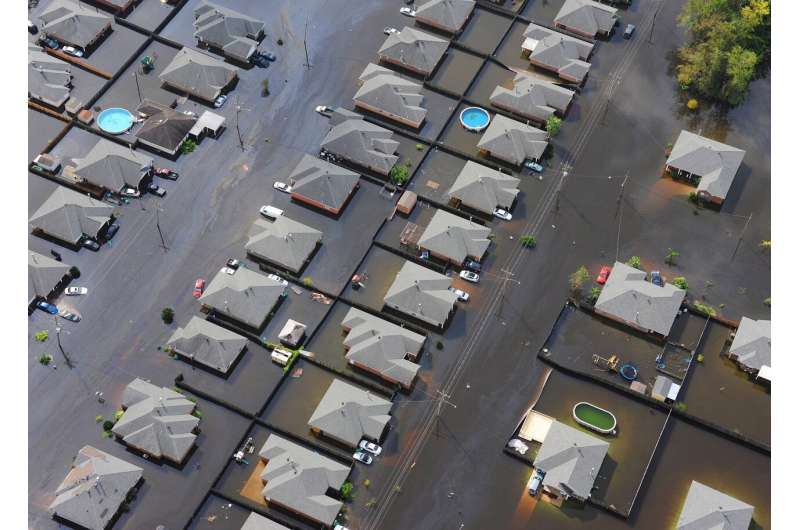Credit: CC0 Public Domain
Seawater could spill into streets more often in the coming year as the ocean continues to rise at an accelerating rate.
The frequency of fair-weather flooding, where unusually high tides bring ocean water into streets and neighborhoods, is projected to reach an average of five days in the U.S. Southeast, a 190% increase over the year 2000, according to an annual report on high-tide flooding released Wednesday by the National Oceanic and Atmospheric Administration. For the eastern Gulf of Mexico, there are expected to be three days of fair-weather flooding, a 100% increase.
"Annual flood records are expected to be broken again next year and for years and decades to come," the report says. "Projecting out to 2030 and 2050 provides vital information for communities who are already taking adaptation steps to address coastal flooding impacts and those who are beginning to assess future flood risk in their communities."
Driving the increase is the rise in sea levels, currently averaging about an inch every eight years, compounded by local conditions such as the gradual sinking of land known as subsidence.
"It's not a year 2100 issue," said William Sweet, a NOAA oceanographer, in a conference call with reporters. "The impacts are now, and we're feeling them."
The United States tied a record for sunny-day flooding last year, with an average of five days, with the impacts particularly pronounced in the northeast and Mid-Atlantic. The water levels are measured by 98 tide gauges around the United States.
The east coast of Florida escaped the worst of it. Tide gauges at Virginia Key outside Miami, for example, registered no days of fair-weather flooding in 2018.
That may puzzle residents of parts of Miami Beach, Fort Lauderdale and Delray Beach, who typically need to walk and drive through at least a few inches of water during the worst of the fall high tides. But Sweet said the federal system for registering fair-weather flooding set a threshold for severity that would exclude some days in which residents experienced flooding.
Florida's Gulf coast experienced several days of fair-weather flooding, although the report attributed much of that to the passage of Hurricane Michael toward the Panhandle. A tide gauge in St. Petersburg, for example, registered four flood days in 2018. The city is projected to experience one to three days in 2019.
The flooding disrupted traffic in parts of the east coast, and in South Florida it raised the groundwater level and degraded septic tank systems, according to the report.
Ten years from now, the average number of high tide days is projected to increase to seven to 15 days, according to the report, and by 2050, they could increase to 25 to 75 days.
©2019 Sun Sentinel (Fort Lauderdale, Fla.)
Distributed by Tribune Content Agency, LLC.
























